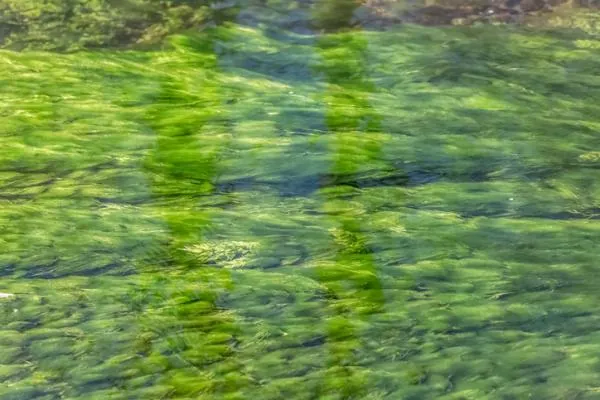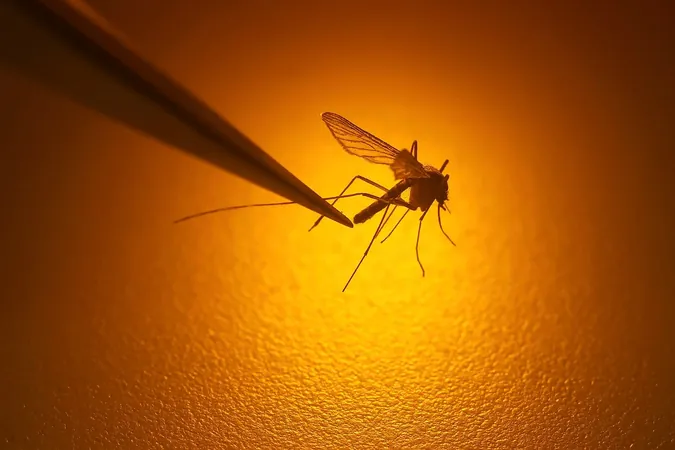
Discover the Fascinating World of Green Algae: Characteristics, Types, and Their Importance
2025-06-27
Author: Sophie
What Are Green Algae?
Green algae, a vital group of over 10,000 species, thrive globally in both freshwater and marine environments. These organisms are not just a common sight at beaches and rivers, but they also share a deep evolutionary connection with terrestrial plants.
Understanding the Classification of Green Algae
Falling under the Plantae kingdom and the viridiplantae sub-group, green algae are primarily categorized into two main divisions: Chlorophyta and Charophyta. Chlorophyta includes diverse types like filamentous marine algae, unicellular species, and flagellates, while Charophyta focuses on freshwater varieties that often resemble land plants.
Identifying Key Characteristics of Green Algae
The standout feature of green algae is their possession of chlorophyll a and b, responsible for their vibrant green hue. This pigment enables them to perform photosynthesis, extracting energy from sunlight and water. Most green algae are found in freshwater ecosystems, thriving in moist terrestrial environments and symbiotically associating with other organisms, such as lichens.
Diverse Reproductive Strategies of Green Algae
Green algae exhibit various reproductive methods, including four significant types: hologamia (unicellular species merging gametes), conjugation (involving male and female filaments), planogamy (mobile gametes propelled by flagella), and oogamy (where non-flagellated female gametes remain still). Each method reflects their adaptability in different environments.
Exploring Types of Green Algae with Real-World Examples
Here are some notable types of green algae:
1. Chlorophyta
With around 8,000 species, Chlorophyta is the most numerous. These include both unicellular and multicellular types, found in various freshwater and marine habitats.
2. Prasinophytina and Chlorophytina
Prasinophytina consists of microscopic, flagellate algae found in marine settings, while Chlorophytina includes multicellular varieties with specialized microtubules.
3. Charophyta
Often regarded as the closest relatives of land plants, Charophyta features algae with cellulose-rich cell walls and are found in freshwater and brackish waters.
4. Coleochaetales and Charophyceae
Coleochaetales are unique for their growth patterns from edges, and Charophyceae, also known as coarsal algae, can grow impressively large, reaching sizes up to 60 cm.
5. Other Noteworthy Types
The Klebsormidophyceae and Mesostigmatophyceae consist of a few genera, while Zygnematophyceae includes both unicellular and multicellular forms, emphasizing their biological diversity.
The Crucial Role of Green Algae in Ecosystems
Green algae are integral to ecosystems, being significant oxygen producers and foundational elements in aquatic food chains. Their evolutionary journey paved the way for terrestrial plants, illustrating their importance in the history of life on Earth.
Moreover, in today’s world, both the pharmaceutical and food industries harvest green algae for their medicinal and nutritional properties, delivering vital health benefits to humans.
Conclusion: The Legacy of Green Algae
Green algae are more than just pond scum; they are ancient, diverse, and incredibly important to life on Earth. Understanding them helps us appreciate the delicate balance of our ecosystems and the evolutionary story of plant life.









 Brasil (PT)
Brasil (PT)
 Canada (EN)
Canada (EN)
 Chile (ES)
Chile (ES)
 Česko (CS)
Česko (CS)
 대한민국 (KO)
대한민국 (KO)
 España (ES)
España (ES)
 France (FR)
France (FR)
 Hong Kong (EN)
Hong Kong (EN)
 Italia (IT)
Italia (IT)
 日本 (JA)
日本 (JA)
 Magyarország (HU)
Magyarország (HU)
 Norge (NO)
Norge (NO)
 Polska (PL)
Polska (PL)
 Schweiz (DE)
Schweiz (DE)
 Singapore (EN)
Singapore (EN)
 Sverige (SV)
Sverige (SV)
 Suomi (FI)
Suomi (FI)
 Türkiye (TR)
Türkiye (TR)
 الإمارات العربية المتحدة (AR)
الإمارات العربية المتحدة (AR)